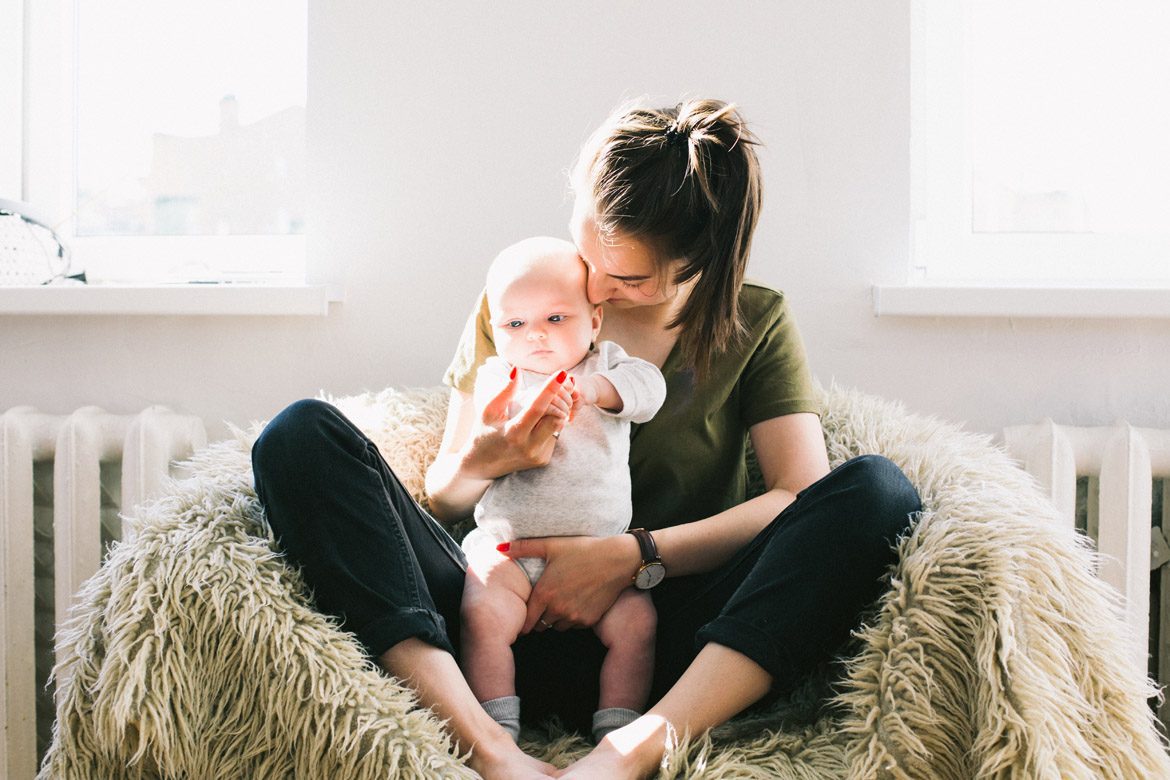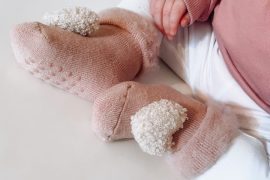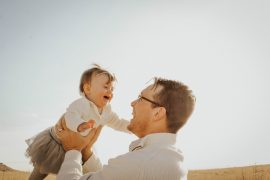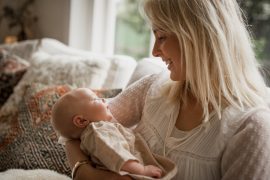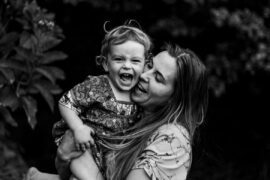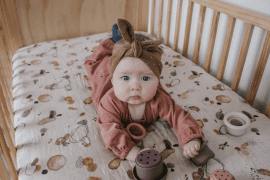Copyright Dr Sarah Buckley (2017)
Elimination Communication (EC) – also known as Infant Potty Training (IPT), Elimination Timing (ET) and Natural Infant Hygiene – is how most babies are brought up around the world. This “method”, which is so obvious in most cultures that it needs no name, involves the mother and baby becoming attuned and communicative so that the mother knows when the baby needs to eliminate – pee or poo.
I first heard the phrase Elimination Communication when my fourth baby Maia Rose was 3 months old, and a friend pointed me towards an EC website. I was very excited about it as I had read in a letter to Mothering magazine (US) a few years earlier, that African women cue their babies to eliminate with a “psss” sound, and I had begun to do this with Maia from birth. I was drawn to the idea of a deeper physical and psychic connection with my baby, and EC felt closer to our genetic imprint. The first time I tried it, I held Maia (aged 3 months) over the laundry tub, and made the “psss” noise. To my delight, she peed straight away, and we have been doing it ever since.
It has been more rewarding for our family than I could have imagined. It has given us more skin-to-skin contact, less washing, no diaper/nappy rash, and, best of all, a deeper respect for Maia’s abilities and a finer attunement to her rhythms. There is obviously less waste and a better time for Mother Earth; and it’s fun! After having three babies in diapers/nappies, I have been constantly delighted at Maia’s ability to communicate her needs, and to keep telling me until I get it.
Elimination Communication also makes a beautiful contribution to my experience of mindfulness in my mothering. Like breastfeeding, it keeps me close to my baby, physically and psychologically, and provides very immediate feedback when I am not tuned in.
From the start, I’ve had a lot of support from Emma (then 10), Zoe (7) and Jacob (5), who have told me how much they disliked sitting in wet or soiled diapers/nappies as babies. Some believe that our society’s sexual problems may begin when our babies learn to switch off from their genital area because of the unpleasant sensations of wearing a “walking toilet”. My partner Nicholas wondered about the extra effort that I went to in the first year, but has been very happy to reap the benefits of a diaper/nappy-free toddler.
Reflecting on my babies with and without EC, I think that probably ALL babies signal their elimination needs from an early age, but because we’re not expecting it, we misinterpret – and don’t reinforce – their signals, especially when we cover their bottoms and can’t actually see the connection with eliminating. In the first few months, I learnt Maia’s signals by carrying her around bare-bottomed and observing her closely. I discovered that she would squirm and become unsettled, sometimes with a bit of crying, especially if it took me a while to “get it”.
At other times, it was more psychic, and I found myself heading for the laundry tub, where we usually eliminated, without really thinking. When I was distracted, or delayed acting on my hunch, I usually got peed on. (However, she very seldom peed on me when I carried her in a sling). Her signal for poop was usually a few farts, or sometimes she’d even pull off the breast as a means of signaling that she needed to go. She didn’t want to sit in her own poop!
In the first few months, I learnt Maia’s signals by carrying her around bare-bottomed and observing her closely. I discovered that she would squirm and become unsettled, sometimes with a bit of crying, especially if it took me a while to “get it”.
Learning Maia’s daily pattern was also useful. She usually pooped first thing in the morning, and, as a baby, tended to pee frequently (about every 10 minutes) in the first few hours after arising. (My husband found this really tricky when he was “on duty” in the morning.) I noticed that she would also pee about 10 minutes after breastfeeding or drinking and would almost always pee on awaking. (I think the need to eliminate awakens many of us!)
In her first year, we used the laundry tub by preference. I’d hold her upright by her thighs, with her back resting on my belly. A small sandpit-type bucket with a conveniently concave lip was also useful: I’d sit and hold it between my thighs, supporting Maia above it. The blue bucket – now a family icon – has been very well travelled, and also came into its own at night later on. As she got older and heavier, I found that sitting her on the toilet in front of me worked well – sometimes we’d have a “double pee”, which was always successful if nothing else worked! Along with the position, I cued her with my “psss” noise, and sometimes at the tub, when she was slow to start, I’d run some water as well.
After 3 months or so of doing this, I became more sure of my interpretation and I would sometimes gently persist, even when she was reluctant, and usually she’d eliminate. However it’s a fine line, and it’s vital to have cooperation, and not a battle of wills, which can sometimes develop around “toileting”. EC is a dance of togetherness that develops, as with breastfeeding, from love and respect for each other.
See next page for the rest of the article…

